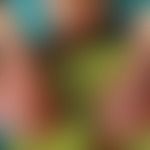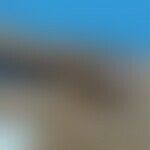Synonym(s)
HistoryThis section has been translated automatically.
Hutchinson 1888; Bury 1889; Radcliffe-Crocker & Williams 1894. Erythema elevatum et diutinum (EED) was first described in the 1880s. The term "erythema elevatum diutinum" was first used by Henry Radcliffe-Crocker (1845-1909) in 1894.
DefinitionThis section has been translated automatically.
Relatively rare (less than 1000 cases have been described in the literature worldwide), benign, albeit eminently chronic (diutinum!), reactive-inflammatory disease of the skin with the characteristic histologic picture of leukocytoclastic "small vessel" vasculitis with consecutive angiocentric and storiform fibrosis (Sandhu JK et al. 2019).
You might also be interested in
Occurrence/EpidemiologyThis section has been translated automatically.
Relatively rare, epidemiology figures are not available.
EtiopathogenesisThis section has been translated automatically.
Unexplained, probably "immune-triggered" vasculitis of small vessels; occasional detection of monoclonal immunoglobulins, most frequently in the context of IgA gammopathy (more rarely IgG gammopathy/multiplemyeloma), viral (HIV, COVID19) and bacterial infections, possibly also in cryoglobulinemia.
It is assumed that the clinical symptoms are due to the deposition of immune complexes in the blood vessels of the skin, which leads to complement fixation, activation of the complement system, an influx of neutrophils and the release of destructive enzymes.
Apparently, antineutrophil cytoplasmic antibodies (ANCAs) are pathogenetically effective in EED. They are detected in a high percentage of patients (Ayoub N et al. 2004). Furthermore, EED can be triggered by the activation of cytokines (interleukin-8), which cause a selective recruitment of leukocytes into the blood vessels. This leads to repeated damage to the vessels, which eventually develops into fibrosis.
Associations with infections (e.g. HIV, hepatitis B, hepatitis C, HIV), with autoimmune diseases, in particular rheumatoid arthritis, as well as Crohn's disease, ulcerative colitis, Wegener's granulomatosis have been described; furthermore with myelodysplasia. The occurrence of EED after COVID vaccination has been reported several times (Fiorillo G et al. 2022).
The presence of extracutaneous manifestations (see below) in patients with erythema elevatum diutinum (EED) suggests that EED may be a multiorgan vasculitic systemic disease.
ManifestationThis section has been translated automatically.
LocalizationThis section has been translated automatically.
Mainly over the extensor sides of the extremity joints (fingers, hands, knees), also buttocks, genitals, face and neck.
ClinicThis section has been translated automatically.
Subacute development of symmetrical or asymmetrical, initially soft, later firm, roundish, also anular or polycyclic, blue-red or red-brown, also hemorrhagic, succulent large plaques (note: a purple component is not always clearly visible, as the small focal hemorrhages occur intermittently).
Over the course of weeks and months, blue-reddish-brown, smooth-surfaced, firm, broad-based nodules several centimeters in size may develop. Central indentation can be detected frequently, possibly also stabbing pain, burning or itching.
Early lesions tend to be light red, whereas older lesions tend to be livid red to brown-red. EED in dark skin presents a particular clinical challenge because the initial red tones are now completely overlaid and only the slightly darker tinged, plaque or nodular contours are recognizable.
Plate-like, keloid lesions are also described. These are apparently completely resistant to treatment, making surgical methods necessary (Awan BE et al. 2021/s.Fig.).
Possible syntropies exist with gout, arthralgia, scleritis, panuveitis, peripheral ulcerative keratitis, Sjögren's syndrome (Shimizu S et al. 2008), oral and penile ulcers (Sandhu JK et al. 2019), Crohn's disease. Early indications for non-Hodgkin's lymphoma have been proven (Hatzitolios A et al. 2008). The extent to which there are pathogenetic links to the clinical picture of "pulmonary hyaline granulomatosis" is still unclear (see Rodríguez-Muguruza S et al. 2015; see also Müller CSL et al. 2009). The skin lesions can heal after years (periods of 5-35 years are reported), leaving hyperpigmented scars.
HistologyThis section has been translated automatically.
At an early stage, the signs of leukocytoclastic vasculitis can be detected with perivascularly oriented neutrophilic leukocytes and nuclear dust as well as fibrin in the vessel walls.
In "full-blown" lesions, a dense, diffuse infiltrate is found in the upper and middle dermis. A vascular orientation is then usually not (or no longer) detectable. The epidermis and skin appendages remain uninvolved. The infiltrates consist of lymphocytes, neutrophilic leukocytes and nuclear dust, eosinophilic leukocytes, histiocytes and plasma cells. Additional proliferation of fibrocytes and collagen fibers.
Concentric fibrosis can dominate the histological picture in older lesions, possibly with a "pseudotumorous" aspect. Lipid deposits in the connective tissue can also be detected in older lesions, which gave the clinical picture its former name of "extracellular cholesterolosis" (Herzberg JJ 1958; Wolff HH et al. 1978). Their pathogenetic significance is unclear.
The following algorithm can be schematized:
| Accentuated around postcapillary venules |
| Capillaries omitted the less involved |
| perivascular leukocytoclasia |
| Damage to endothelial cells |
| Fibrin in/around vessel walls |
| Perivascular extravasation of erythrocytes |
| Edema in the papillary dermis |
| Collagen degeneration |
| Variable number of eosinophils |
|
Plasma cells and fibrosclerosis Note: In older lesions, increasing concentric fibrosis with regression of the inflammatory component of the granulomatous reaction. |
Differential diagnosisThis section has been translated automatically.
Granuloma anulare: the greatest clinical analogies exist with this clinical picture. However, EED shows a stronger inflammation. A histologic clarification may be necessary.
Granuloma faciale: the classic granuloma faciale must be excluded due to its localization. The rare extrafacial granuloma "faciale" must be excluded histologically.
Erythema anulare centrifugum: annular red plaques emphasizing the trunk; no nodule formation.
Chronic recurrent anular neutrophilic dermatosis (CRAND): rarely described neutrophilic plaque-like, non-nodular dermatosis characterized by a ring-shaped and chronic course and histological involvement as in Sweet syndrome. Clinically, CRAND resembles erythema anulare centrifugum. Its histologic aspects overlap with neutrophilic dermatoses.
Erythema multiforme: the clinical acuteity of EEM speaks absolutely against the protracted course of EED; typical clinical picture with the cocardial lesions.
Acute febrile neutrophilic dermatosis (Sweet syndrome): acute exanthematic, febrile, papulo-pustular clinical picture, laboratory with inflammatory parameters.
Rheumatoid nodules: nodules and nodules belonging to the so-called rheumatism nodosus, which occur in 20% of patients with chronic polyarthritis (rheumatoid arthritis), mostly in severe forms of the disease. Rheumatoid factor positive.
Multicentric reticulohistiocytosis: Symmetrically distributed, multiple, pinhead to pea-sized, mostly coarse-consistent, skin-colored but also copper-brown, sometimes slowly growing, sometimes eruptively exanthematous, solitary, also confluent papules and nodules, possibly with atrophic, possibly also excoriated, mostly smooth surface. Typical (>50% of cases) is a pearl-like involvement of the nail folds of the fingers (coral pearl sign). In 25% of cases, xanthelasma is present at the same time.
TherapyThis section has been translated automatically.
If necessary, treatment of the underlying disease.
The best results are described with DADPS. Patients respond to varying doses (50-150 mg/day). Improvement is immediate in some patients within days, in others skin lesions take months to heal. Treatment failures are known.
Local therapy with a 5% dapsone gel (ACZONE; Allergan Inc, Irvine, CA/Frieling GW et al. 2013) also appears to be effective in isolated cases.
The clinical picture is usually less responsive to glucocorticoids. However, a therapy cycle over 4-6 weeks is recommended (initially 50mg prednisolone /day; gradual reduction over the indicated period) .
The use of nicotinamide (e.g. Nicobion 1 tbl./day) is described as successful in individual cases.
Symptomatic therapy of itching with H 1 antagonists, e.g. desloratadine (Aerius) 1 tablet/day p.o. or levocetirizine (Xusal) 1 tablet/day p.o..
Progression/forecastThis section has been translated automatically.
Chronic course. Spontaneous healing is possible after years, leaving a hypo- or hyperpigmented scar.
LiteratureThis section has been translated automatically.
- Awan BE et al. (2021) A Case of Erythema Elevatum Diutinum (EED) Exhibiting A Keloid-Like Appearance. Dermatol Ther (Heidelberg) 11:2235-2240.
- Ayoub N et al. (2004) Antineutrophil cytoplasmic antibodies of IgA class in neutrophilic dermatoses with emphasis on erythema elevatum diutinum. Arch Dermatol 140:931-936.
- Burnett PE et al (2003) Erythema elevatum diutinum. Dermatol Online J 9: 37
- Bury JS (1889) A case of erythema with remarkable nodular thickening and induration of the skin associated with intermittent albuminuria. Illus Med News 3: 145
- Chen KR et al. (2002) Clinical and histopathological spectrum of cutaneous vasculitis in rheumatoid arthritis. Br J Dermatol 147: 905-913
- Frieling GW et al. (2013) Novel use of topical dapsone 5% gel for erythema elevatum diutinum: safer and effective. J Drugs Dermatol. 12:481-484.
- Fiorillo G et al. (2022) New-onset erythema elevatum diutinum following COVID-19 vaccination. Ital J Dermatol Venerol 157:527-528.
- Hatzitolios A et al. (2008) Erythema elevatum diutinum with rare distribution as a first clinical sign of non-Hodgkin's lymphoma: a novel association? J Dermatol 35:297-300.
- Herzberg JJ (1958) Extracellular cholesterinosis (KERL-URBACH), a variant of erythema elevatum diutinum. Archiv für klinische und experimentelle Dermatologie 205: 477-496.
- High WA et al (2003) Late-stage nodular erythema elevatum diutinum. J Am Acad Dermatol 49: 764-767
- Hoy JV et al. (2018) Unusual presentation of erythema elevatum diutinum with underlying hepatitis B infection. Cutis101:462-465.
- Hutchinson J (1888) On two remarkable cases of symmetrical purple congestion of the skin in patches, with induration. Br J Dermatol 1: 10-15
- Kim H (2003) Erythema elevatum diutinum in an HIV-positive patient. J Drugs Dermatol 2:411-412.
- Lisi S et al. (2003) A case of erythema elevatum diutinum associated with antiphospholipid antibodies. J Am Acad Dermatol 49: 963-964
- Liu J et al (2022) Erythema elevatum diutinum. Am J Med Sci 363:e21-e22.Liu J et al. (2022) Erythema Elevatum Diutinum. Am J Med Sci 363:e21-e22.
- Mançano VS et al. (2018) Erythema elevatum diutinum. An Bras Dermatol. 2018 Jul-Aug;93(4):614-615.
- Manni E et al. (2014) Case of erythema elevatum diutinum associated with IgA paraproteinemia successfully controlled with thalidomide and plasma exchange. Ther Apher Dial 19:195-196
- Momen SE egt al. (2014) Erythema elevatum diutinum: a review of presentation and treatment. J Eur Acad Dermatol Venereol 28:1594-1602
- Müller CSL et al (2009) Erythema elevatum et diutinum associated with pulmonary infiltrates and necrotizing keratopathy - a diagnostic challenge! Current Dermatology 35: 502 - 505
- Patnala GP et al. (2016) Erythema elevatum diutinum in association with IgA monoclonal gammopathy: A rare case report. Indian Dermatol Online J. 7:300-303.
- Radcliffe-Crocker HW, Williams C (1894) Erythema elevatum diutinum. Br J Dermatol 6: 1-9 and 53-5
- Ratzinger G et al (2015) The vasculitis wheel-an algorithmic approach to cutaneous vasculitides. JDDG 1092-1118
- Rodríguez-Muguruza S et al (2015) Pulmonary hyalinizing granuloma associated with Sjögren syndrome and ANCA MPO vasculitis. Joint Bone Spine 82:71-72.
- Sandhu JK et al. (2019) Erythema elevatum et diutinum as a systemic disease. Clin Dermatol 37:679-683.
- Shimizu S et al. (2008) Erythema elevatum diutinum with primary Sjögren syndrome associated with IgA antineutrophil cytoplasmic antibody. Br J Dermatol 159:733-735
- Wolff HH et al (1978) Erythema elevatum diutinum. I. Electron microscopy of a case with extracellular cholesterolosis. Arch Dermatol Res 15:261:7-16.
- Wollina U et al. (2022) Severe leukocytoclastivc vasculitis after COVID-19 vaccination-cause or coincidence? Case reprot and literature review. Georgian Med News 324:134-139.
Wollina U et al. (2019) Erythema Elevatum Diutinum - Two Case Reports, Two Different Clinical Presentations, and a Short Literature Review. Open Access Maced J Med Sci 7:3039-3042.
Incoming links (21)
Cholesterol, extracellular; Crocker, radcliffe henry; Cryoglobulins and skin; Dadps; Dermatitis-arthritis syndromes; Erythema; Erythema figuratum perstans; Erythema microgyratum persistens; Gluten-Related Dermatological Disorders; Granulomatous interstitial Dermatitis with arthritis; ... Show allOutgoing links (26)
Antihistamines; Cholesterol, extracellular; Chronic recurrent annular neutrophilic dermatosis; Crohn disease, skin alterations; Cryoglobulins and skin; Dadps; Desloratadine; Erythema anulare centrifugum; Erythema multiforme, minus-type; Facial granuloma; ... Show allDisclaimer
Please ask your physician for a reliable diagnosis. This website is only meant as a reference.

























